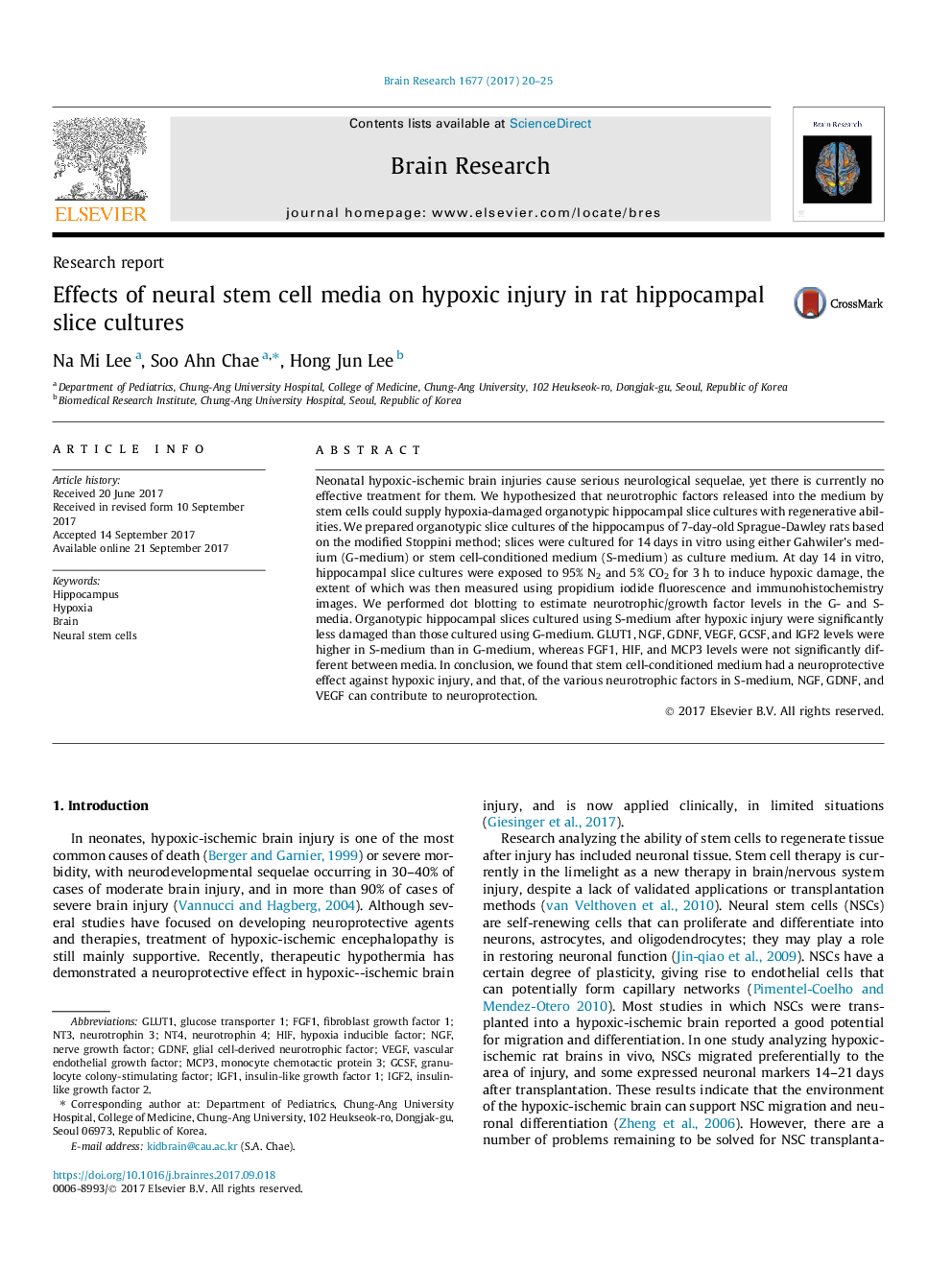| Article ID | Journal | Published Year | Pages | File Type |
|---|---|---|---|---|
| 5736588 | Brain Research | 2017 | 6 Pages |
Abstract
Neonatal hypoxic-ischemic brain injuries cause serious neurological sequelae, yet there is currently no effective treatment for them. We hypothesized that neurotrophic factors released into the medium by stem cells could supply hypoxia-damaged organotypic hippocampal slice cultures with regenerative abilities. We prepared organotypic slice cultures of the hippocampus of 7-day-old Sprague-Dawley rats based on the modified Stoppini method; slices were cultured for 14Â days in vitro using either Gahwiler's medium (G-medium) or stem cell-conditioned medium (S-medium) as culture medium. At day 14 in vitro, hippocampal slice cultures were exposed to 95% N2 and 5% CO2 for 3Â h to induce hypoxic damage, the extent of which was then measured using propidium iodide fluorescence and immunohistochemistry images. We performed dot blotting to estimate neurotrophic/growth factor levels in the G- and S-media. Organotypic hippocampal slices cultured using S-medium after hypoxic injury were significantly less damaged than those cultured using G-medium. GLUT1, NGF, GDNF, VEGF, GCSF, and IGF2 levels were higher in S-medium than in G-medium, whereas FGF1, HIF, and MCP3 levels were not significantly different between media. In conclusion, we found that stem cell-conditioned medium had a neuroprotective effect against hypoxic injury, and that, of the various neurotrophic factors in S-medium, NGF, GDNF, and VEGF can contribute to neuroprotection.
Keywords
NT4FGF1IGF2NT3HIFNGFGCSFGDNFGLUT1Igf1Neural stem cellsFibroblast growth factor 1granulocyte colony-stimulating factorVascular endothelial growth factorVascular Endothelial Growth Factor (VEGF)nerve growth factorinsulin-like growth factor 1insulin-like growth factor 2Hypoxia Inducible Factorglial cell-derived neurotrophic factorBrainNeurotrophin 3Neurotrophin 4HippocampusHypoxiaglucose transporter 1
Related Topics
Life Sciences
Neuroscience
Neuroscience (General)
Authors
Na Mi Lee, Soo Ahn Chae, Hong Jun Lee,
